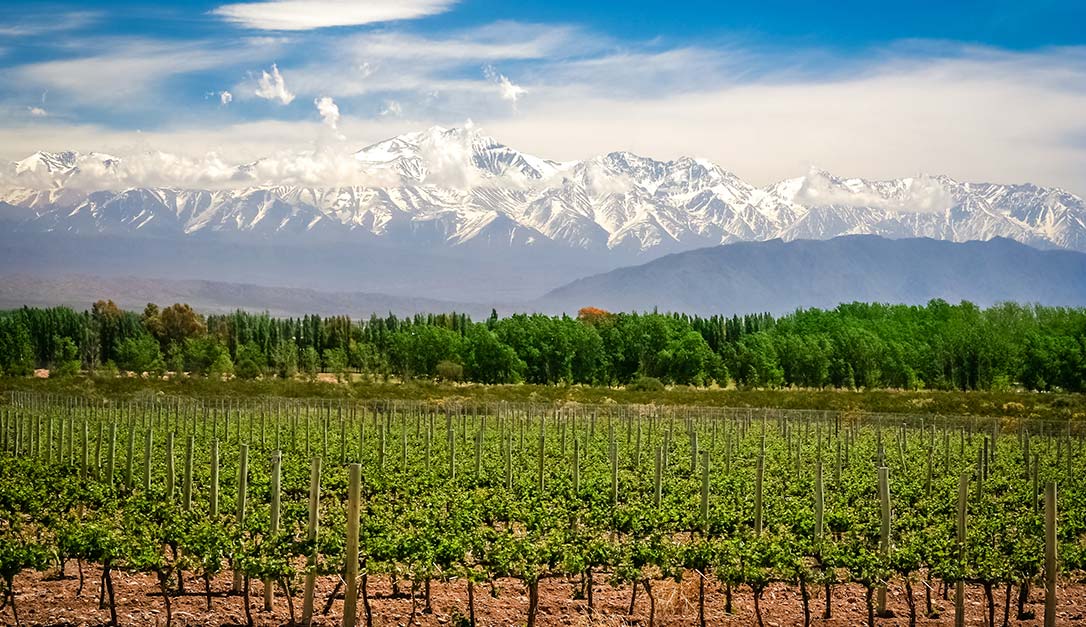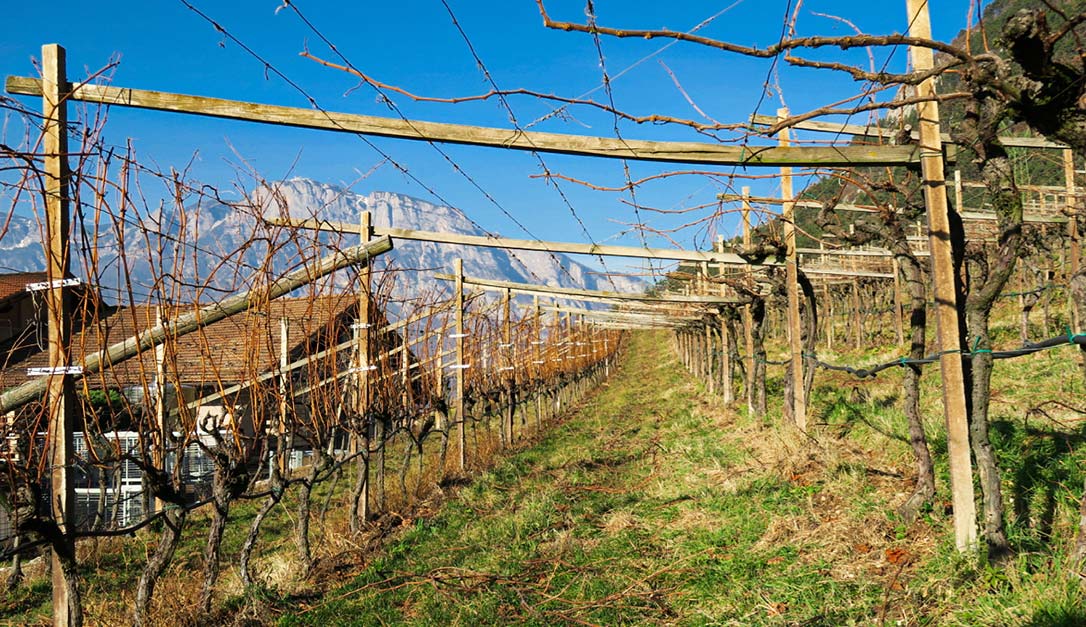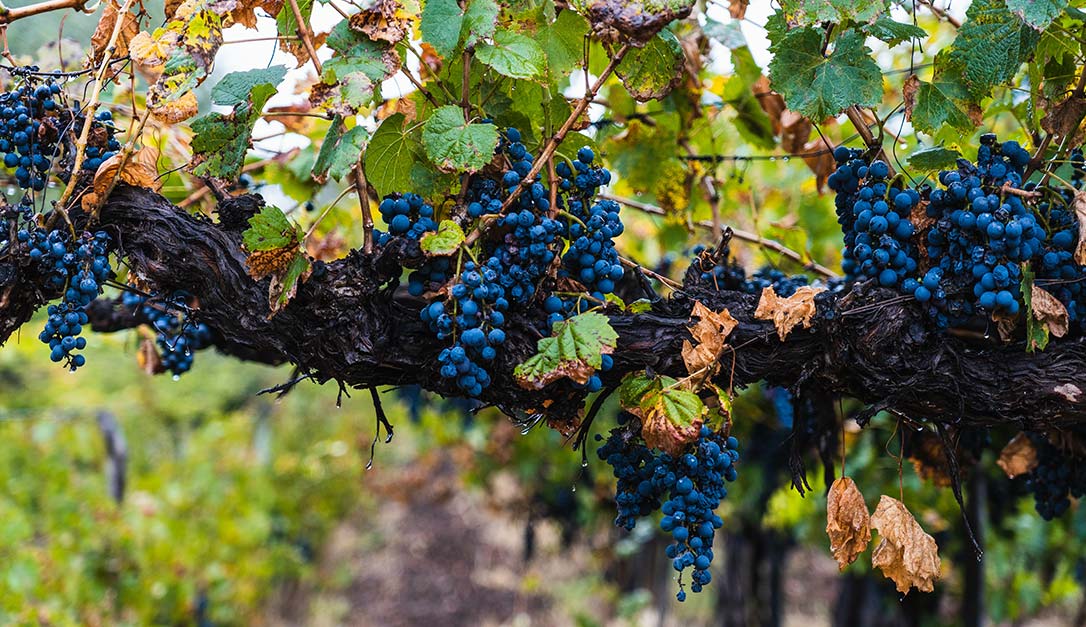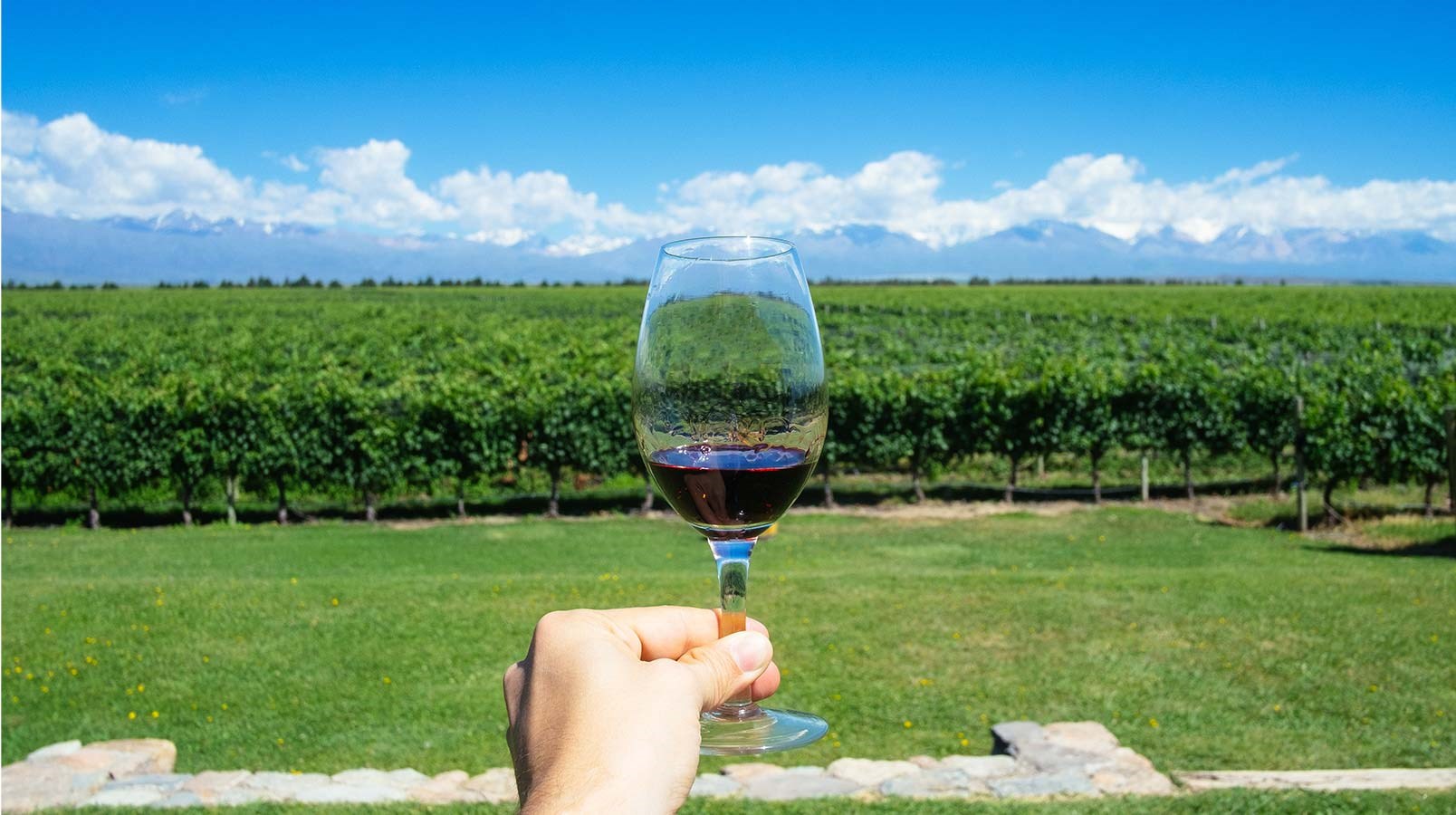Famous for its deep colour, smooth tannins, and black fruit characters, Malbec is grown in wine-producing regions around the world, including South-West France and Bordeaux, and it has become Argentina’s flagship variety.
Styles vary from entry-level, easy-drinking wines to old vine, barrel-aged wines with more complexity, finesse, and structure. And while it is most commonly produced as a varietal wine, it is also used in premium blends with varieties like Cabernet Sauvignon, Merlot, Cabernet Franc, Petit Verdot, and even Bonarda—Argentina’s second most planted variety.
Origins
This variety’s history is deeply rooted in France where it has played a longtime role in classic Bordeaux blends. Having become less relevant to these blends in recent years, the grape is notably the star in South West France’s Cahors appellation where it has often been referred to as producing ‘black’ wines for its notoriously tannic and long-lived nature. These wines continue to showcase deep colour, high tannins, and intense dark berry fruits, along with cedar and earth upon extended maturity.
Finding a home in Argentina
That said, this variety is now most recognized for its Argentine production—particularly within the Mendoza province. With the world’s largest plantings of Malbec vines, Argentina offers a diverse range of styles from full-bodied and richly fruited wines found at lower altitudes to the more elegant, fresh, and floral renditions produced at higher altitudes. Additionally, these wines are also spread across a wide price spectrum that offers everything from value-driven wines to ultra-premium options intended for further bottle aging.
If you’d like to learn more about how climate affects the wines you taste, the WSET Level 2 Award in Wines offers insights into the style and quality of wines made from grapes grown in over 70 grape-growing regions around the world. Click here to find out more.

The vineyards of Mendoza, Argentina
Much of this grape's success in Argentina can be attributed to the unique growing environment throughout the wine-producing areas. Resting under a rain shadow from the Andes mountain range, Mendoza’s sunny, desert-like conditions also grant producers the opportunity to practice organic viticulture with little threat of rot or mildew. But, as with all regions, there are certain challenges that Mendoza faces including summer hail and spring frosts. Measures can be taken in the vineyard to manage these issues such as netting to protect the vines along with blending from several different vineyard sites.
Argentine Malbec was also previously planted in the pergola system, locally known as parral, in order to protect the fruit from the immense heat near to the ground and provide shade for the fruit. Vines are now primarily grown with vertical trellises, allowing for more modern canopy management techniques and drip irrigation. Either way, canopy management is imperative to ensure proper shading from harsh sunlight.

Examples of trellising: Vertical shoot positioning (VSP) on the left, pergola on the right. Image is taken from the WSET Level 4 Diploma in Wines, courtesy of David Way DipWSET
Climate and geography
Within Mendoza are five divisions: Northern, Eastern, Central, Uco Valley, and Southern. Each comes with its own distinct climate and set of growing conditions that present a vast array of blending options throughout the region. Central Mendoza is historically significant for this variety's production with many of the most celebrated producers based there. Within this division, the Luján de Cuyo department is renowned for producing some of the world’s finest Malbec - much of which is planted between 900 and 1,100 metres in altitude (2950–3610 feet). The signature style from this area is older vine wine that is soft and round with sweet spice characters.
Further southwest and nestled alongside the ice-capped Andes, high-quality wine is also produced in the picturesque Uco Valley. This division features some of the highest vineyards in Mendoza reaching up to 1,500 metres in altitude (4,920 feet). Vines grown here benefit from sunny days followed by cool nights that help to retain acidity along with fresh fruit and floral qualities.

Grapes on a vine
Outside of France and Argentina, this grape is also used for red Meritage blends in California as well as varietal wines and blends in Australia and New Zealand.
Pro tip: “Meritage blends” refers to Bordeaux-style wines made by members of the Meritage Alliance, a group originally founded to promote blended wines from California’s Napa Valley. Red Meritage may include Cabernet Sauvignon, Cabernet Franc, Malbec, Merlot, Petit Verdot, Saint-Macaire, Gros Verdot and Carmenere, though Saint-Macaire and Gros Verdot are extremely rare.
Production methods
Although this grape has its own distinct, unique characteristics, production methods, as with all winemaking, will play a crucial part in the final style and quality of the wine (both in the vineyard and the winery).
These production methods can include everything from site selection and yield management to extraction method and fermentation temperature, whole-bunch inclusion and post-fermentation maceration to blending and oak maturation, and much more. While the best examples are often aged in new oak, winemakers are currently experimenting with gentler extractions to produce a more elegant style.
Across the globe, wines made from this variety are enjoyed for their ripe fruit, and youthful characters, or for their well-structured, lean and elegant characters, whichever style best suits the occasion. And with continued exploration in production techniques, consumers may increasingly find lighter and more floral whole-cluster styles to sip on.
We can only give you a snapshot this exciting grape here, but if you are inspired to take your wine knowledge to the next level, sign up for a class today! Visit our Where to Study page to find the right course provider for you.
Written by Julie Albin DipWSET, Regional Marketing Manager, Americas.
Related content:


